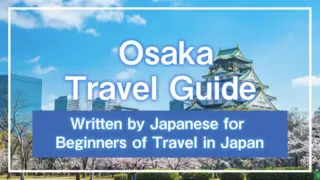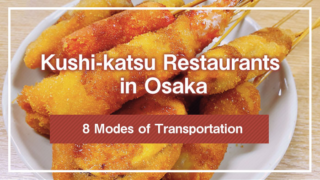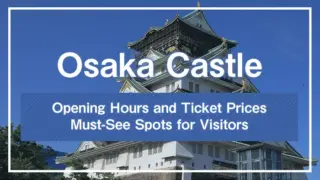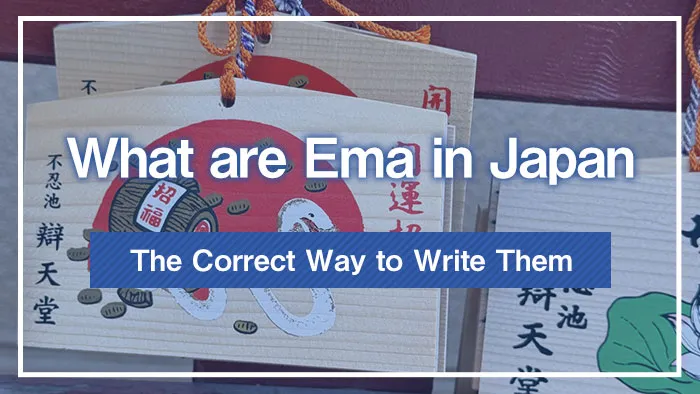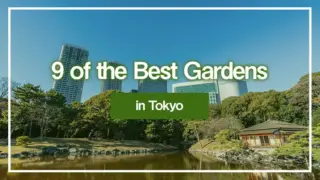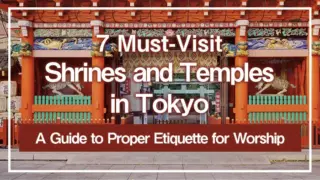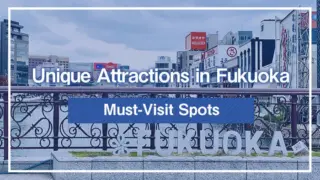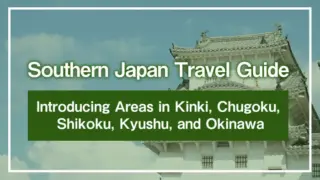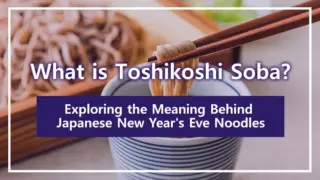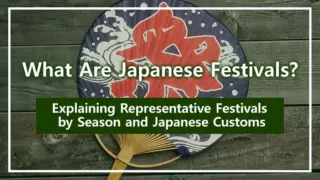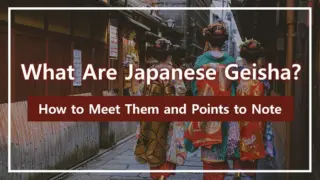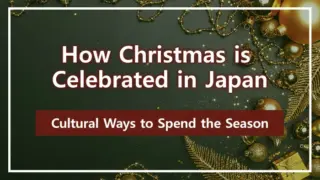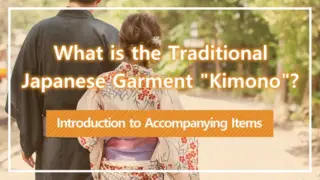Japanese ema are a unique Japanese custom of writing wishes on wooden plaques and offering them at shrines. Behind this practice lies ancient faith and history. Ema are not mere souvenirs but an important means of communication with the gods.
This article explains the origins of ema, the correct way to write them, the process of offering them, and introduces shrines across Japan known for their unique ema. For those who want to deepen their understanding of Japanese culture, please use this as a reference.
1. What are Ema in Japan?
Ema are wooden plaques offered at shrines and temples where people write wishes or words of gratitude. It’s a traditional Japanese custom. The plaques often feature pictures of horses, which is the origin of the term “ema” (picture horse).
In ancient times, live horses were offered to gods for prayer, but as times changed, people began offering plaques with horse pictures instead. Today, ema contain various wishes such as prayers for passing exams, good health, and finding love, serving as a medium to convey worshippers’ thoughts to the gods.
1-1. The Origin of Japanese Ema
The origin of ema dates back to ancient Japan. At that time, horses were called “shinme” (sacred horses) and were considered sacred vehicles for gods descending to earth. When praying to gods, people would offer live horses, but gradually wooden or clay horses were used as substitutes. During the Nara period, “ema” – wooden plaques with horse pictures – were created.
During the Muromachi period, “large ema” appeared, and during the Edo period, “small ema” became popular among common people, establishing the custom of making offerings with personal wishes. Today, animals other than horses and lucky symbols are often depicted, and ema continue as a faith culture with a long history.
2. The Correct Way to Write and Offer Japanese Ema
Writing on ema is not difficult, but there is a certain process from purchase to offering. To properly deliver your wish, it’s important to know the correct etiquette. Below are the correct procedures for writing and offering ema.
2-1. Visit the shrine
Before offering an ema, it’s important to properly visit the shrine. Shrines are sacred places where gods dwell, and writing wishes on ema is one way to convey your thoughts to the gods.Therefore, the basic flow is to first worship with gratitude and respect before conveying your wishes.
The basic worship etiquette is “two bows, two claps, one bow” (nirei-nihakushu-ichirei). This involves deeply bowing twice, clapping your hands twice, then bowing once more. Show respect to the gods with “two bows, two claps, one bow” and prepare your heart before writing your wish on the ema.
2-2. Purchase an ema
After worship, purchase an ema at the amulet office or shrine office. Ema come in various types, with designs and sizes differing by shrine. Many feature animals or lucky symbols associated with the shrine, and many worshippers enjoy their appearance.
Prices generally range from 500 to 1,000 yen, but specially decorated or larger ema may be more expensive. Choosing an ema that matches your wishes and feelings will deepen the meaning of your offering.
2-3. Write your wish
Once you have your ema, write your wish on the back. The text orientation can be either vertical or horizontal. What’s important is to write carefully so your feelings are properly conveyed, without being bound by format.
An oil-based pen is recommended. Since it resists rain and moisture, your wish will remain visible for a long time. It’s also perfectly fine for foreign tourists to write in English. It is believed that gods value the “sincerity” behind the words rather than the words themselves.
2-4. Write your name, date, and address
After writing your wish, it’s common to write your “name, date, and address” in the remaining space on the ema. This tells the gods who made the wish, when, and from where, leading to a more sincere offering.
However, you don’t need to write your full name or detailed address.If you’re concerned about privacy, just your surname, first name, or nickname is fine. For your address, just the region like “Tokyo” or “Canada” is sufficient.
For the date, either Western or Japanese calendar is acceptable. It’s good to leave it as a memento of your visit and for your own memories. As long as your feelings are sincere, you don’t need to be strict about the format.
2-5. Make the offering
Once you’ve finished writing on your ema, offer it at the ema rack (ema-den) installed at the shrine. When offering, it’s common to hang it with the side showing your wish facing outward. Be careful not to hang it backward so that your wish properly reaches the gods.
You can take the purchased ema home as a memento,but it’s believed that your wish is only conveyed to the gods when you offer it. Therefore, just displaying it at home is insufficient for prayer purposes.
Offering an ema is not merely a ritual but an important communication with the gods. Offer it with sincerity and care.
3. What to Do When Your Wish on an Ema Comes True
If your wish written on an ema comes true, it is considered polite to visit the shrine again and report to the gods that your wish has been fulfilled. This is called “return visit of gratitude” and is an important custom to maintain a good relationship with the gods by expressing gratitude.
During your return visit of gratitude, worship at the main shrine again and express your gratitude for the fulfillment of your wish. No special words or format are needed, but what’s most important is to simply say “Thank you” with sincerity.
It is believed that gods watch over not only your wishes but also your state of mind afterward. After your wish is fulfilled, conclude with a visit filled with gratitude.
4. Famous Japanese Shrines for Ema
At shrines throughout Japan, distinctive ema based on deities and history are available, delighting visitors. Some feature unique ema with motifs of animals, lucky symbols, or local legends, which can be enjoyed along with worship. Below are introductions to several shrines particularly famous for their ema.
4-1. Fushimi Inari Taisha
Fushimi Inari Taisha in Kyoto is known as the head shrine of approximately 30,000 Inari shrines across Japan and is said to bring benefits for business prosperity, household safety, and traffic safety. Famous for its vermilion “Senbon Torii” (thousand torii gates), fox statues are found throughout the grounds, with the “white fox” (byakko) being the symbol of faith as the messenger of the gods.
At Fushimi Inari Taisha, “white fox ema” shaped like fox faces and ema shaped like red torii gates are offered. The white fox ema has a unique format where you draw your favorite face on the front and write your wish on the back, resulting in a variety of distinctive ema.
This shrine is especially recommended for those wishing for business prosperity or industrial development, and you can enjoy original ema along with worship.
4-2. Sankoinari Shrine
Sankoinari Shrine in Inuyama City, Aichi Prefecture, is located at the foot of Inuyama Castle and is a popular shrine known for its benefits for matchmaking and marital harmony. It is particularly bustling with young women and others wishing for love.
The characteristic features of Sankoinari Shrine are the vibrant torii gates throughout the grounds and the pink heart-shaped ema. The wish-writing side has a heart-shaped frame, making it popular on social media for being photogenic. It’s perfect for couples and spouses visiting, as well as for those wishing to fulfill their love.
It is beloved by many worshippers as a recommended power spot for those wishing for good relationships between men and women, marital harmony, and household safety.
4-3. Kawai Shrine
Kawai Shrine, a subsidiary shrine of Shimogamo Shrine in Kyoto, is known as a shrine dedicated to Tamayorihime-no-mikoto, the goddess of female protection and beauty. It attracts the faith of women wishing for beauty and improved beauty consciousness, making it one of Kyoto’s foremost beauty prayer spots.
The specialty of Kawai Shrine is the “mirror ema” shaped like a hand mirror. The front has an outline of a face drawn, where you apply makeup with colored pencils or cosmetics to represent your ideal face. You write your wish on the back and offer it.
This ema is recommended not only for outward appearance but also for those wishing for inner beauty, and it’s said that using your daily cosmetics increases the benefit. It’s a special experience where you can include positive prayers for yourself.
4-4. Toyokuni Shrine
Toyokuni Shrine in Higashiyama Ward, Kyoto, is known as a shrine dedicated to the warring states general Toyotomi Hideyoshi. The grounds contain a magnificent karamon gate and structures associated with Hideyoshi, attracting worshippers wishing for career advancement and success.
The ema at Toyokuni Shrine are gourd-shaped, based on the “gourd horse insignia” used by Hideyoshi in battle. With its auspicious shape, two types are available: “success in fortune” and “matchmaking.” Ema with written wishes are submitted to the shrine office, prayed over the next day, and then offered in the shrine for two years. These are formal ema recommended for those wishing for success or good relationships.
Conclusion
Ema are one aspect of Japanese faith culture continuing since ancient times and an important means of delivering wishes to the gods. There are proper etiquette and processes for offering them, requiring sincerity from worship to purchase, writing, and offering of the ema.
After your wish comes true, it is polite to make a return visit of gratitude. Many shrines have distinctive ema, making them attractive not only for prayer but also as a cultural experience. When traveling, please visit shrines and experience this unique aspect of Japanese culture.
*This article is based on information available as of April 2025.

